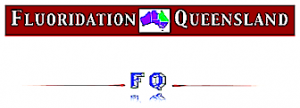You are here: Home1 / FDA Warnings For Oral And Injectable Fluoroquinolone Antibiotics ̵...
FDA Drug Safety Communication:
FDA updates warnings for oral and injectable
fluoroquinolone antibiotics due to disabling side effects
Original ⇒ HERE
This information is an update to the FDA Drug Safety Communication: FDA advises restricting fluoroquinolone antibiotic use for certain uncomplicated infections; warns about disabling side effects that can occur together issued on May 12, 2016
[05-10-2017] As part of our ongoing review of fluoroquinolone antibiotics, FDA is informing the public that patient cases identified by the FDA and findings from published studies currently do not support reports that these medicines may result in detachment of the retina in the eyes, or bulges or tears in the aorta blood vessel called aortic aneurysm and aortic dissection. We will continue to assess safety issues with fluoroquinolones and will update the public if additional actions are needed.
[ 7-26-2016 ] The U.S. Food and Drug Administration (FDA) approved changes to the labels of fluoroquinolone antibacterial drugs for systemic use (i.e., taken by mouth or by injection). These medicines are associated with disabling and potentially permanent side effects of the tendons, muscles, joints, nerves, and central nervous system that can occur together in the same patient. As a result, we revised the Boxed Warning, FDA’s strongest warning, to address these serious safety issues. We also added a new warning and updated other parts of the drug label, including the patient Medication Guide.
We have determined that fluoroquinolones should be reserved for use in patients who have no other treatment options for acute bacterial sinusitis, (ABS), acute bacterial exacerbation of chronic bronchitis (ABECB), and uncomplicated urinary tract infections (UTI) because the risk of these serious side effects generally outweighs the benefits in these patients. For some serious bacterial infections the benefits of fluoroquinolones outweigh the risks, and it is appropriate for them to remain available as a therapeutic option.
Patients must contact your health care professional immediately if you experience any serious side effects while taking your fluoroquinolone medicine. Some signs and symptoms of serious side effects include unusual joint or tendon pain, muscle weakness, a “pins and needles” tingling or pricking sensation, numbness in the arms or legs, confusion, and hallucinations. Talk with your health care professional if you have any questions or concerns (see List of Serious Side Effects from Fluoroquinolones).
Health care professionals should not prescribe systemic fluoroquinolones to patients who have other treatment options for acute bacterial sinusitis (ABS), acute bacterial exacerbation of chronic bronchitis (ABECB), and uncomplicated urinary tract infections (UTI) because the risks outweigh the benefits in these patients. Stop fluoroquinolone treatment immediately if a patient reports serious side effects, and switch to a non-fluoroquinolone antibacterial drug to complete the patient’s treatment course (see List of Currently Available FDA-approved Fluoroquinolones for Systemic Use).
Fluoroquinolones are antibiotic medicines that work by killing or stopping the growth of bacteria that can cause illness. They are FDA-approved to prevent or treat certain serious bacterial infections.
The labels of fluoroquinolone medicines already have a Boxed Warning for tendinitis, tendon rupture, and worsening of myasthenia gravis. The labels also include warnings about the risks of peripheral neuropathy and central nervous system effects. Other serious risks associated with fluoroquinolones are described in the labels, such as cardiac, dermatologic, and hypersensitivity reactions. After FDA’s 2013 review that led to the additional warning that peripheral neuropathy may be irreversible, FDA evaluated post-marketing reports* of apparently healthy patients who experienced disabling and potentially permanent side effects involving two or more body systems after being treated with a systemic fluoroquinolone (see Data Summary). We evaluated only reports submitted to FDA, so there are likely additional cases of which we are unaware. The side effects occurred within hours to weeks after starting the fluoroquinolone, and at the time we received the reports, the side effects had continued for an average of 14 months to as long as 9 years after stopping the medicines. Several cases reported that some side effects stopped or improved after discontinuation of the medicine; others reported the side effects worsened or continued.
We previously communicated about these safety issues associated with fluoroquinolones in
May 2016. Additional communications about related safety issues associated with fluoroquinolones occurred in August 2013 (peripheral neuropathy) and July 2008 (tendinitis and tendon rupture). The safety issues described in this Drug Safety Communication were also discussed at an FDA Advisory Committee meeting in November 2015.
In addition to updating information in the Boxed Warning, we are also including information about these safety issues in the Warnings and Precautions section of the label. The Indications and Usage section contains new limitation-of-use statements to reserve fluoroquinolones for patients who do not have other available treatment options for acute bacterial sinusitis (ABS), acute bacterial exacerbation of chronic bronchitis (ABECB), and uncomplicated urinary tract infections (UTI). The patient Medication Guide that is required to be given to the patient with each fluoroquinolone prescription describes the safety issues associated with these medicines. We are continuing to assess safety issues with fluoroquinolones as part of FDA’s usual ongoing review of drugs and will update the public if additional actions are needed.
We urge health care professionals and patients to report side effects involving fluoroquinolone antibacterials and other drugs to the FDA MedWatch program, using the information in the “Contact FDA” box at the bottom of the page.


Scroll to top